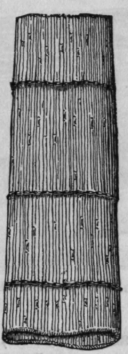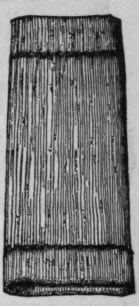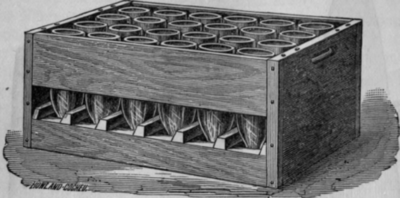Boxes And Crates
Description
This section is from the book "A Treatise On Beverages or The Complete Practical Bottler", by Charles Herman Sulz. Also available from Amazon: A Treatise On Beverages.
Boxes And Crates
For containing and transporting bottles of carbonated beverages boxes or crates are required. They should be of convenient size, strong and durable but light, and divided into partitions for conveniently placing each bottle. False bottoms are required for neck downwards, to prevent the bottles touching bottom. It is especially important to place cork-stoppered bottles neck down, to keep the cork always in moisture by the liquid, otherwise it would dry out and a considerable loss of gas would be the consequence. Various styles of boxes and crates for home trade and shipment are employed.



Fig. 260. - Straw Covers for Bottles.

Fig. 261. - Shipping Crate.
The partitions of the boxes or crates must be made so deep that the bottles cannot knock together, and that the bottles are always below the top of the boxes. The shipping crates should be closed by spring locks or other suitable means to prevent their getting opened while on their way, but to allow their being opened easily at their place of destination without using violent means, as chisel, etc., and thus break the locks and spoil the crate.

Fig. 262.- Delivery Box.
Closed or tight bottoms of crates should have suitable openings to allow the contents of burst bottles to flow off and allow some ventilation. The boxes and crates employed in the manufacture of carbonated beverages are usually transported in special wagons, made and designed for the purpose.
Continue to:


